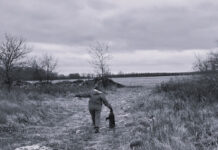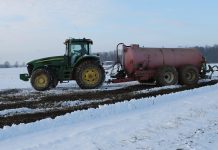No harvested grain fields, no crummy weather, and even worse, no ducks. Yeh, I know, we should have called first.
Understand, however, that we had made this trip twice before and had great mid-October shooting. But that was then, and this was now, another win for global warming.
It’s enough to make a person cry uncle without hearing the hard truth spoken by every landowner we encountered.
Duckless
They, to a man, agreed that the wettest year on record, the lack of crops and a harvest that wasn’t, the infestation of duckling eating coyotes, and every other demon imaginable, had left the cereal belt practically duckless, a real oddity for this historic migration stopover.
And as bad as we felt for them, we felt even worse for us, after all, chasing a great hunt for well over 1,000 miles isn’t much fun when the expected hunt just isn’t there.
One landowner even contacted a local friend who was “up north” just to find out that, indeed, the ducks were still in caribou country, hundreds of miles north and worse yet, the birds seemed to be in no hurry to leave their summer home.
It’s all about weather, and the freeze up that would send the ducks south wasn’t there yet.
Plan B
Plan B was our only alternative. Three quarters of our load was field hunting equipment ranging from lay out blinds to huge bags of field decoys, full body ducks and geese that look so much like the real McCoys. All of which made quite a pile near the tent.
Our attention now was to scout out local ducks and target their favorite sloughs. A slough in most of the world is a slew in the north, a depression scoured out by long ago glacial movement.
These small ponds hold water year around and they are present by the hundreds. Mostly lined by heavy reads, these tiny pockets of water attract migrators as they move through and summer homes and nesting areas for local waterfowl.
We dug out waders and the few floating decoys that we had fortunately packed, then headed for the first of many dirt road scouting missions.
Time spent on the road and few knocks on doors led to a couple promising slews and a ray of hope that we would salvage at least some small part of what we had come to Manitoba for.
What we found were mostly mallards with a spattering of divers in the mix. Our daily ritual became a near-shore set up before daylight, a duck or two before noon followed by one more scouting trip to find a spot for the next morning.
Finally, a gracious landowner told us about a piece of property he pastured that held a huge slew, one that held hundreds of ducks and geese each day, an attractive wetlands that we frequented from then on.












